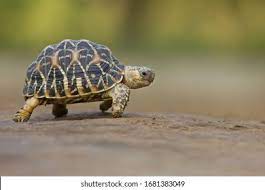How To Master Kurma Nadi | Breath Meditation
Pranayam is the science where, by consciously breathing in a particular way, the very way you think, feel, understand and experience life can be changed. You can use your breath as a tool to do many subtler and sharp things with the body and the mind. One of such breathing technique is Kurma Nadi Breath Meditation. This article will show you How To Master Kurma Nadi and mythology & science tagged with it.
What Is Kurma Nadi ?
At the base of the spine, between the first and second chakras, there is a particular energy channel called the kurma nadi. The kurma nadi originates here and runs all the way to the hollow of the throat. It regulates the stability of the body and mind. The stability of the spine and all that is centered around it depends on the firmness of kurma nadi. By keeping the head, neck, and trunk straight and sitting in a meditative pose, one attains firmness in the energy that is controlled by the kurma nadi.
We can find our own firm foundation by understanding and gaining mastery over the tortoise ( Kurma ) within—kurma nadi. There are 15 main nadis: sushumna, ida, pingala, gandhari, hastijihva, kuhu, sarasvati, pusha, shankhini, payasvini, varuni, alambusa, vishvodara, yashasvini, and kurma. Kurma in Sanskrit means “tortoise or turtle.” Kurma nadi is related to kurma prana. In Yoga Sutra 3:32 says, “Kurmanadyam sthairyam, that while practicing samyama (the threefold concentration, meditation, and samadhi) on kurma nadi, one attains stability of mind as well as body.
The Tagged Mythology
In this story, the tortoise is the foundation, kurma nadi. If the tortoise moves, then the serpent (kundalini) cannot help anymore. The inhalation and the exhalation, the gods and the demons, are both pulling the snake, and by pulling one after another, by taking turn, they move the Himalayas (the spine). They churn it constantly. By churning the Himalayas, held tightly on the tortoise, the sadhaka, or student, one day attains the nectar.
According to yogic mythology, there is an enormous and powerful kurma (tortoise), on whose back sits shesha naga (the cosmic snake). This snake has a thousand heads and it holds the earth on one of them. When it shifts the earth from one head to another, earthquakes occur. The most powerful earthquakes happen when the tortoise—who holds the snake who is holding the earth—moves slightly.
Mastery over the Kurma Nadi | How To Master Kurma Nadi
The root of the kurma nadi is the tortoise. The stability of the spine and all that is centered around it depends on the firmness of kurma nadi. By keeping the head, neck, and trunk straight and sitting in a meditative pose, one attains firmness in the energy that is controlled by the kurma nadi. Time, space, and causation are basic conditionings of the mind. How we sit and where we sit creates a deep groove in the mind. It is important, therefore, to sit for meditation every day and to sit in the same meditative pose each time. The best pose is the one in which the head, neck, and trunk remains in a straight line.
To gain conscious control over both the kurma nadi and the kurma vayu, it is important to practice ashvini mudra.
Anatomically and physiologically, the area of the ashvini mudra is close to the colon, ovaries, uterus, and bladder. So each time you do ashvini mudra, pulling up and releasing, you are attaining conscious control over all these organs. This also speeds up the process of blood circulation throughout your system. In the process, you are also letting your kurma vayu move, creating heat. That heat is dispersed throughout your body from the kurma nadi, or kurma vayu, through ida, pingala, and sushumna to all the nadis. The process increases the proper circulation of energy throughout our system. So wherever there is a little bit of blockage, wherever there is a little bit of impurity here or there, that energy will touch it and the process of purification will begin.
To try Ashwini Mudra at home : visit https://blog.cult.fit/articles/ashwini-mudra-horse-gesture-steps-amazing-health-benefits
Practicing with Kurma Nadi
This is a practice to develop steadiness and stillness.
The subtle nerve plexus called Kurma Nadi is located about 1” down from the notch in the centre of your collarbone and ½ “ inside. You can visualize that as an oval shaped object about ¾ “ long in a cool color (blue, green, violet) according to your preference.
Simply focus the mind there for about 5 minutes before or after meditation, or as a practice apart from meditation. If you have difficulty locating that precise spot with just your mind, simply press your finger on the skin 1” down from the collarbone notch and focus on that spot. The result will come just the same.
Eventually, through that stimulation, you will be able to focus directly on the Nadi itself.
Final Takeaway
The kurma nadi is the vehicle of prana. If you silently watch your breathing, not changing its rythm in any way, just leaving it relaxed and natural. If you simply watch it, you will become absolutely still. The movement exist in you through breathing. The kurma nadi doesn’t lead you anywhere; rather, it helps you stay steady. And, allows other nadis to function in their specific range. The other nadis originate from the top of the kurma nadi; the spine, ida, and pingala all start from there. So control over the kurma nadi is more important than anything else in the practice of pranayama or meditation. However, the above process of How To Master Kurma Nadi described, one should practice it under the guidance of an expert. The whole effort of this yoga is to bring you to such stillness that it cannot be disturbed by anything !
Read also : The Idea Of Spiritual Luxury ! https://thebrightdelights.com/the-idea-of-spiritual-luxury/
